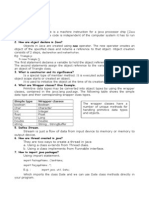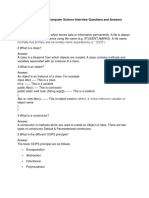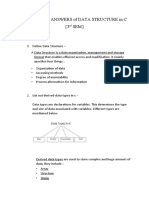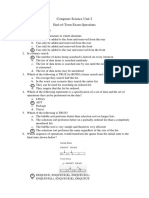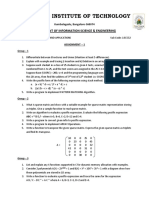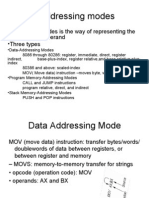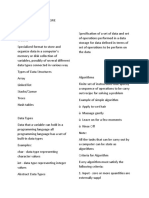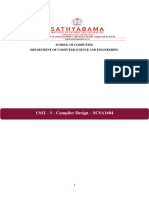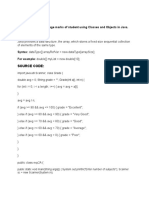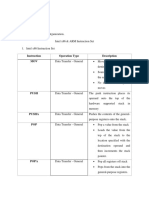0% found this document useful (0 votes)
12 views19 pagesDs Basic
The document provides a comprehensive overview of fundamental data structures and algorithms, including definitions and examples of arrays, linked lists, stacks, queues, trees, and graphs. It also covers object-oriented programming concepts such as inheritance, polymorphism, and encapsulation, along with practical coding problems and solutions related to string manipulation, sorting algorithms, and recursion. Overall, it serves as a guide for coding interview preparation, emphasizing key concepts and practical implementations.
Uploaded by
vinupriyatpcCopyright
© © All Rights Reserved
We take content rights seriously. If you suspect this is your content, claim it here.
Available Formats
Download as DOCX, PDF, TXT or read online on Scribd
0% found this document useful (0 votes)
12 views19 pagesDs Basic
The document provides a comprehensive overview of fundamental data structures and algorithms, including definitions and examples of arrays, linked lists, stacks, queues, trees, and graphs. It also covers object-oriented programming concepts such as inheritance, polymorphism, and encapsulation, along with practical coding problems and solutions related to string manipulation, sorting algorithms, and recursion. Overall, it serves as a guide for coding interview preparation, emphasizing key concepts and practical implementations.
Uploaded by
vinupriyatpcCopyright
© © All Rights Reserved
We take content rights seriously. If you suspect this is your content, claim it here.
Available Formats
Download as DOCX, PDF, TXT or read online on Scribd
/ 19





























